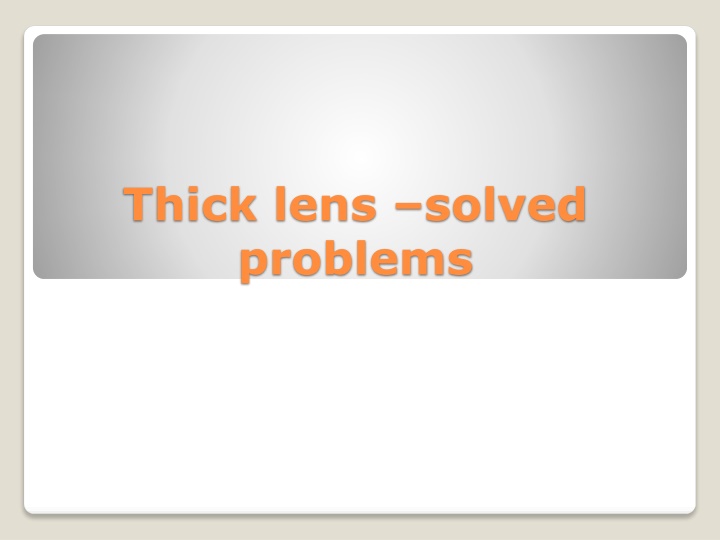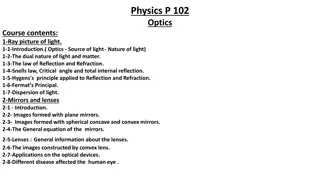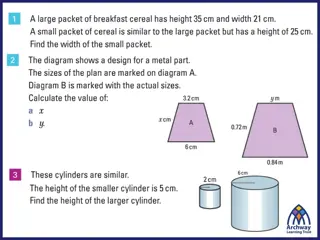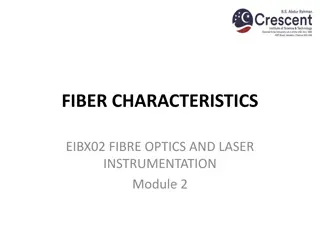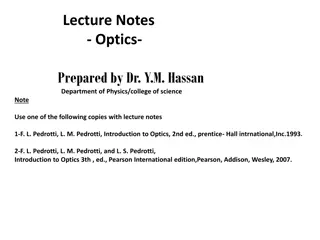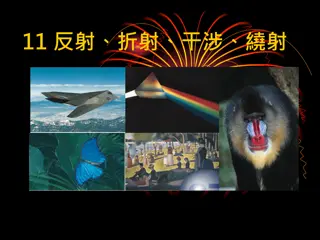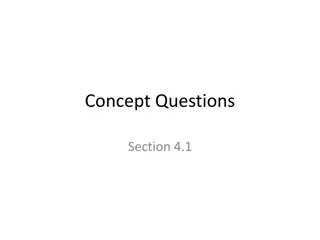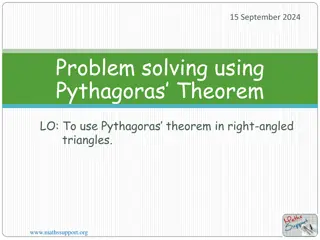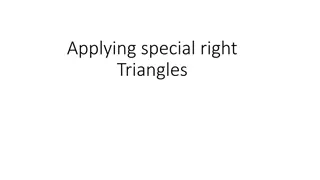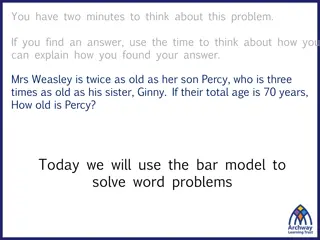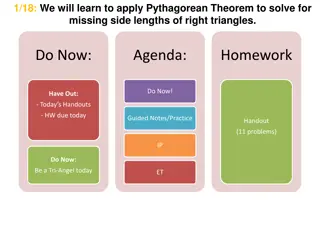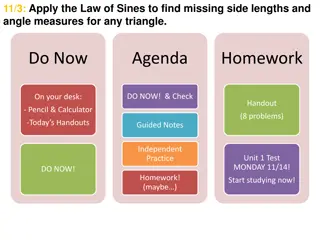Optics Solved Problems: How to Solve for Focal Lengths
This content provides solutions to various optics problems involving thick lenses, double convex lenses, bi-convex lenses, compound lenses, and more. It covers topics such as identifying principal and focal points, calculating image distances, determining the effective focal length of lens systems, and finding image positions. Detailed explanations and equations are presented to guide you through solving complex optics problems.
Download Presentation

Please find below an Image/Link to download the presentation.
The content on the website is provided AS IS for your information and personal use only. It may not be sold, licensed, or shared on other websites without obtaining consent from the author.If you encounter any issues during the download, it is possible that the publisher has removed the file from their server.
You are allowed to download the files provided on this website for personal or commercial use, subject to the condition that they are used lawfully. All files are the property of their respective owners.
The content on the website is provided AS IS for your information and personal use only. It may not be sold, licensed, or shared on other websites without obtaining consent from the author.
E N D
Presentation Transcript
Thick lens solved problems
Q1: A double convex lens has radii of 5 cm and 20 cm a thickness of 2 cm and an index of 3/2. Locate both H principal and focal points and compute the image distance for an object 16.4 cm in front of V1. Determine the values of the f.f.l and b.f.l? Solution: a) 1 2 2 1 ?= 1 21 1 2 5 20 f= 8.2 cm 5 20+ 3
1= 8.2 3 2 1 2 20 3/2 = 0.27 ?? 2= 8.2 3 2 1 2 5 3 2 = 1.099 = 1.1?? The Gaussian lens equation yields: 16.4+1 1 ??= 1 8.2??=16.1 ?? ?????????????2
B.f.l= f+ h2= 8.2 + (-1.1)= 7.1 cm f.f.l = f+ h1 = 8.2 -0.27= 7.9 cm Q2: Two identical bi- convex lens are placed in line with separation of 25.7 mm , each lens has radii of 60 mm and 40 mm a thickness of 20 mm and index of 1.5 .calculate 1) the focal length of each lens and principle points 2) focal length of the system and principals points.? Solution 1 ?2+ ? 1 ? ??1?2 1 ?= ? 11 ?1 1.5 120 1.560 40 10 3600= 1 ?=1.5 11 1 ?= 1 1 60 40+ 9 360 6 7 360 2 360+ F1=51.4 mm F 2=54.1 mm
1 220 51.4 25.7 3 1= = = 8.6 ?? 40 3 1 220 3 2 2 51.4 = 51.4 2= = 5.7 ?? 9 60 : 1 ?=1 +1 ? ?1 ?2 ?1?2
1 1 25.7 3 = 51.4+ 51.4 ?? ?2 = 102.8= 34.3 ?? 51.4 51.4 = 34.3 25.7 51.4 34.3 25.7 ?1= = 17.2 ?? ?2= ?? = = 17.2 ?? ?1 51.4 Q3: Imagine a compound lens consisting of thin positive lens followed at an interval of 20 cm by a thin negative lens .if theses have focal length of +40 cm and -40 cm ,respectively determine the value of focal length of the system and principal points.
F1 F2 H' H b.f.I=40 f.f.I=120 F =80
Solution 1 ?=1 +1 ? ?1?2 ?1 ?2 1 ?= ?= 80 cm 1 1 20 (40)( 40) 40+ 40 ?1= ?? =(80)(20) 40 =(80)(20) 40 = 40 ?? ?2 ? = ?? = 40 ?? ?2 f.f.l ,b.f.l . F1,F2 120 cm, 40 cm
Q4: A bi-concave lens of focal length -60 mm is mounted in a cardboard cylinder 120 mm in front of plano-convex lens of radius 60 mm and index 1.5. find the effective focal length of the system and determine the image which would result from a 3 mm and located 180 mm in front of the device. Solution Solve for plano-convex lens is: 1 ?2 =1.5 11 60 1 = 120 ??
Focal length effective of compound lens is: 1 ?= 1 ?1 +1 ? ?2 ?1?2 1 ?= 1 1 120 60 120 f = 120 mm 60+ 120 ?1= ?? =(120)(120) 120 =(120)(120) 60 = 120 ?? ?2 ? = ?? = 240 ?? ?2
1 1 ??= 1 120??=120 ?? 300+ H' 200 mm ?? ?? 200 300 = 0.66 ??= =
180 Si=200 120 240 So =300
